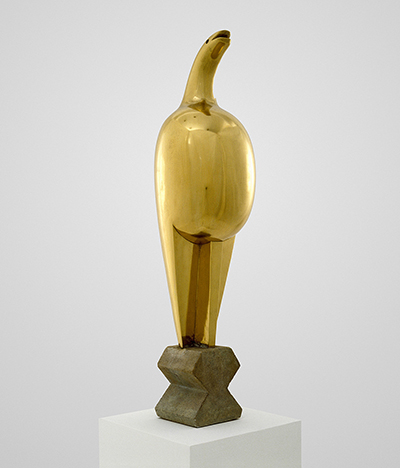Constantin Brancusi had an enduring fascination with the image of a bird which manifested itself in a range of his sculptures and artwork, not least Maiastra which typifies this theme.
Brancusi was born in Romania but made a name for himself in France and was considered a pioneer of the modernism style of art, and he is considered as one of the primary sculptors of the 20th century. Brancusi grew up on a farm in a rural area close to the Carpathian Mountains in a region renowned for a variety of folk crafts, and the artist showed an early interest and skill in carving tools and other objects out of wood.
Brancusi left home at a very young age to escape from a troubled family life, and he continued to carve wooden items which impressed those around him. The creation of a violin inspired a leading an industrialist to enrol him into the Craiova School of Arts and Crafts. Brancusi continued to pursue his passion for wood carving and graduated with honours, after which he went on to enrol in the Bucharest School of Fine Arts and later moved to France.
The Maiastra was created in around 1912, and the sculptor's preoccupation with bird figures and symbols is said to date from around 1910 when he created a plastic form on a similar basis. Using the theme of the Maiastra, Brancusi went on to create about 30 other images of birds. The sculpture in question uses brass on a limestone base, and the flowing lines on the edge of the base give the illusion of perching. The name of the sculpture translates as 'chief' or 'master' in Romanian and references a mythical plumed bird of folklore that was said to have miraculous powers. The dazzling golden plumage of the bird is expressed in the gleaming bronze surface, and the bird’s puffed out chest seems reminiscent of birdsong in conjunction with the open beak.
Brancusi's style is rooted in the deep interest he had for the peasant folklore of his Romanian heritage coupled with later influences when he moved to Paris and undertook tuition in the workshops of Antonin Mercie and Auguste Rodin. However, although Brancusi admired Rodin he felt overshadowed by the eminent sculptor and left after a few months to develop the inimitable style. This has culminated in powerful images such as the Maiastra which have left an enduring legacy, and Brancusi continued to develop this theme throughout his life with other works such as the Golden Bird and the 'Bird in Space.'




